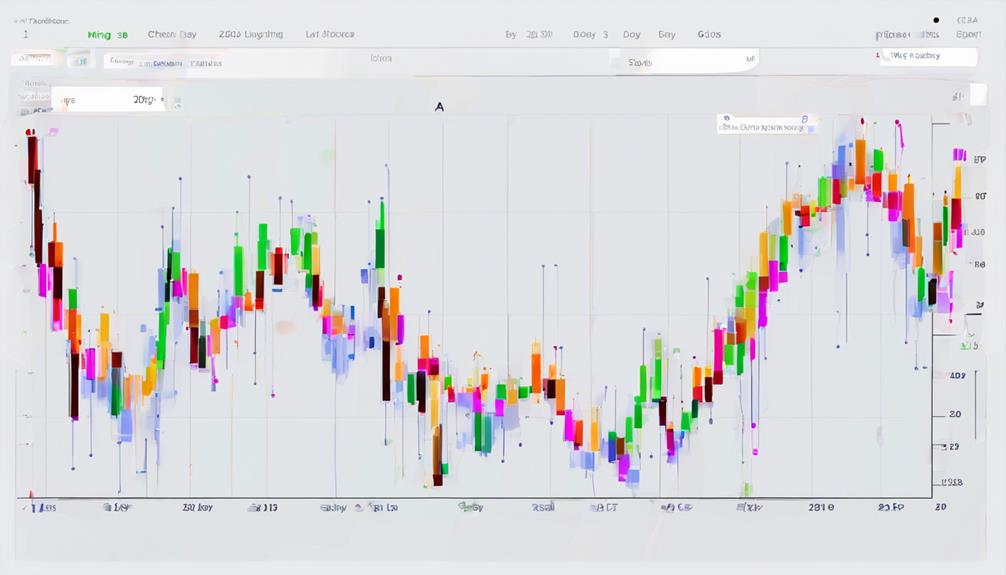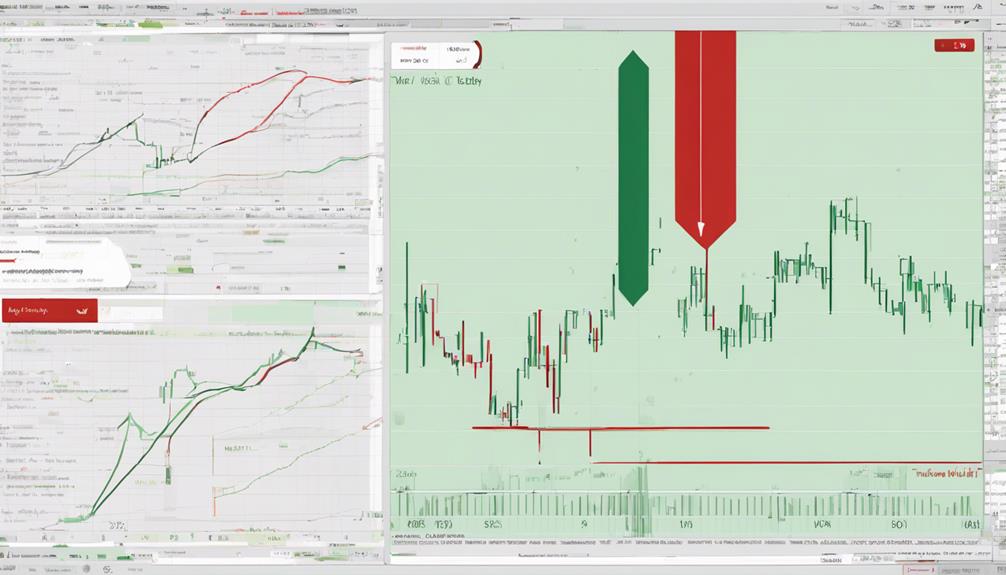When considering trend following indicators, imagine a scenario where a trader uses the Simple Moving Average (SMA) to gauge market sentiment.
Understanding these basic indicators is crucial for making informed trading decisions.
By incorporating indicators like Exponential Moving Average (EMA), Average Directional Index (ADX), and more, you can gain valuable insights into market trends and potential opportunities.
Stay tuned to discover how these indicators can enhance your trading strategies and improve your overall performance in the market.
Simple Moving Average (SMA)
When trading in financial markets, using the Simple Moving Average (SMA) can assist you in identifying the trend direction by smoothing out price fluctuations.
SMA calculates the average price over a specific number of periods, often using closing prices. Traders rely on the 50-day and 200-day SMAs to gauge long-term trend strength and potential reversal points.
Unlike the Exponential Moving Average (EMA) with its weighted moving average, SMA gives equal weight to all data points. SMA crossovers like the golden cross (bullish) and death cross (bearish) can signal trend changes.
Exponential Moving Average (EMA)

To further enhance your understanding of trend-following indicators, let's now explore the Exponential Moving Average (EMA), a tool that places greater emphasis on recent price data to provide quicker insights into current market conditions. Here are some key points about EMA:
- EMA reacts faster to price changes than Simple Moving Average (SMA), signaling buy or sell opportunities early on.
- Traders often use EMA crossovers with different time frames to confirm trend direction and possible reversals.
- Popular EMA combinations like the 20-day and 50-day EMA help identify short-term and long-term trends.
- EMA is a potent indicator for capturing short-term price movements and is widely used for its responsiveness to market dynamics.
Average Directional Index (ADX)

The Average Directional Index (ADX) quantifies trend strength on a scale of 0-100, providing traders with valuable insights into market dynamics. It consists of three lines: the bullish line (+DI), bearish line (-DI), and the ADX line representing overall trend strength.
Crosses between +DI and -DI can signal potential trend reversals. ADX is most effective in trending markets, confirming uptrends and downtrends. Traders typically seek ADX values above 25 to filter out weak trends and focus on strong ones.
It serves as a crucial tool for traders to assess the strength of trends and make informed decisions in trading markets.
What Are the Best Basic Trend Following Indicators to Master for Beginners?
For beginners, mastering simple trend following indicators is essential. Moving averages, relative strength index (RSI), and MACD are among the best options. These tools can help traders identify market trends and make informed decisions. Learning to use these indicators effectively can greatly improve a beginner’s trading success.
Frequently Asked Questions
What Is Trend-Following Indicator?
A trend-following indicator is a tool that helps you identify market trends' direction and strength. It's crucial for traders looking to profit from established trends. Popular indicators like MACD, Parabolic SAR, and ADX analyze historical price data for informed decision-making.
What Are the Top Three Technical Indicators?
To identify market trends effectively, utilize Moving Average Convergence-Divergence (MACD), Average Directional Index (ADX), and Parabolic Stop and Reverse (Parabolic SAR). MACD offers buy/sell signals, ADX measures trend strength, and Parabolic SAR indicates reversals.
What Is the Indicator of a Trend?
To understand the indicator of a trend, you analyze market movements and predict future trends based on historical price data. Trend-following indicators like moving averages, ADX, MACD, and Parabolic SAR help you make informed trading decisions aligned with market trends.
What Is the Triple Indicator Strategy?
The triple indicator strategy combines Moving Average Convergence-Divergence (MACD), Average Directional Index (ADX), and Parabolic Stop and Reverse (SAR) to identify trends, measure strength, and set stop levels. Its integration enhances trading decisions.
Conclusion
In the world of trading, these three basic trend following indicators act as guiding stars, illuminating the path to potential opportunities.
Like a compass pointing north, the SMA, EMA, and ADX offer traders the direction and strength needed to navigate the ever-changing market currents.
By incorporating these indicators into your analysis, you can stay on course and make informed decisions that lead to success in your trading journey.


